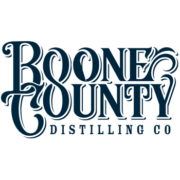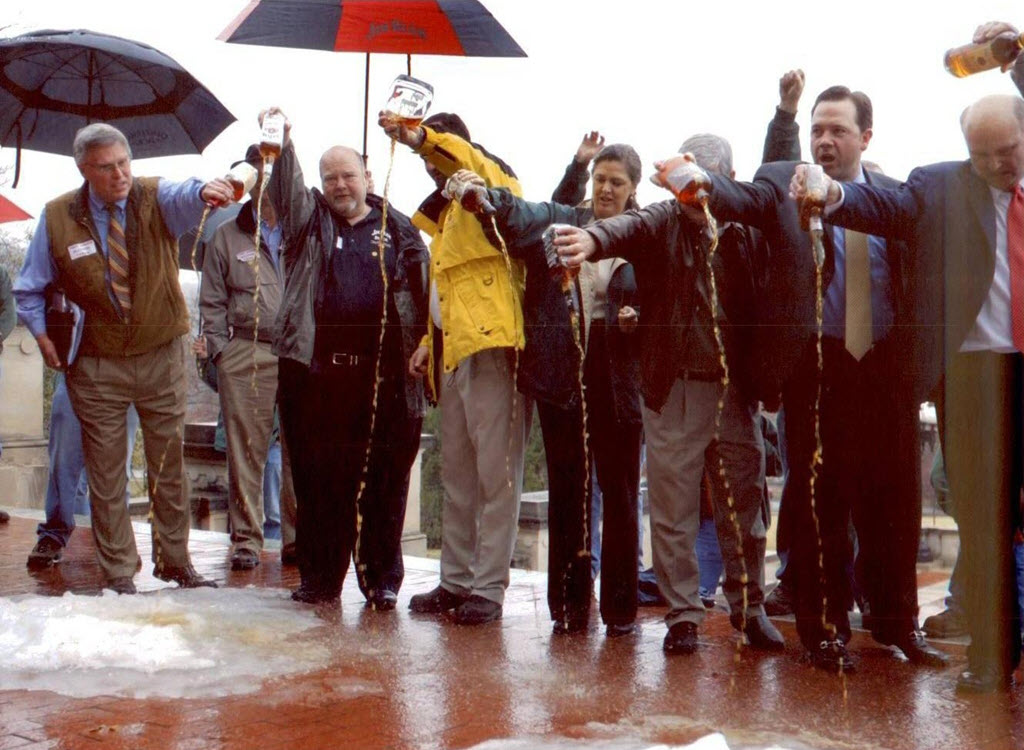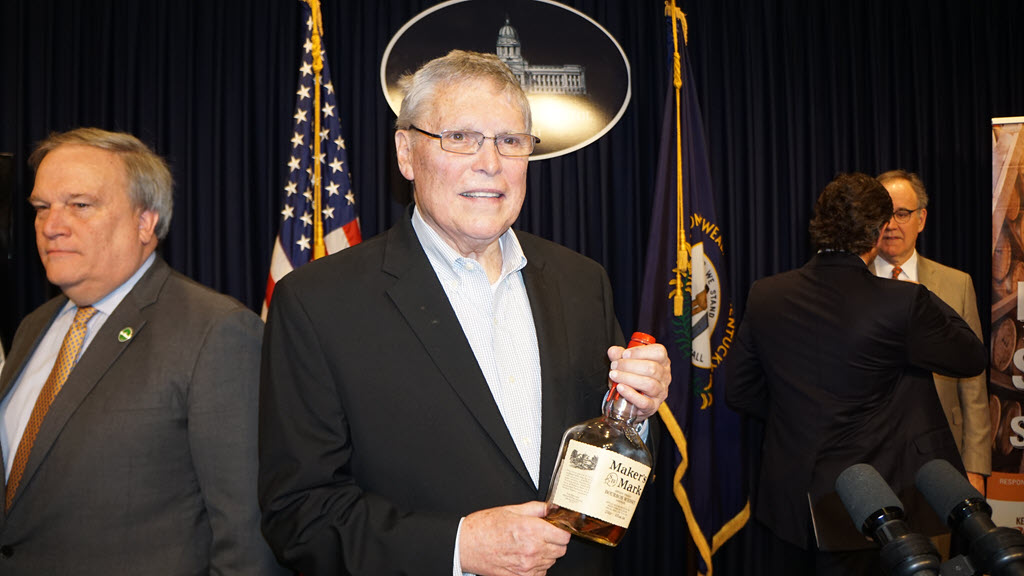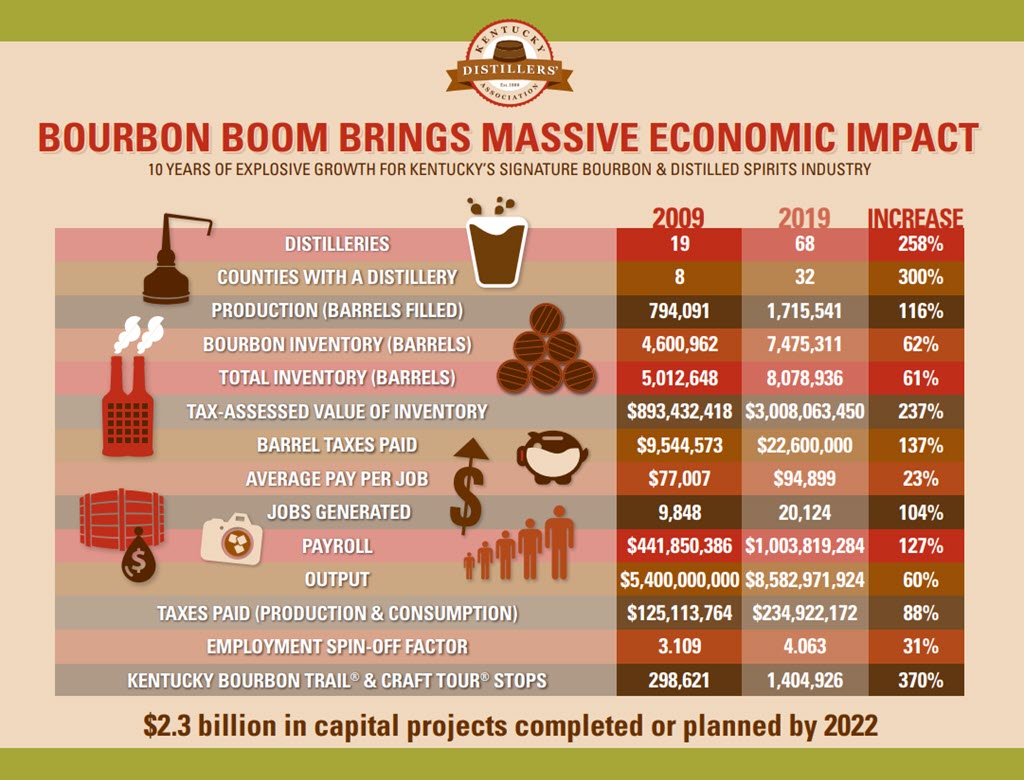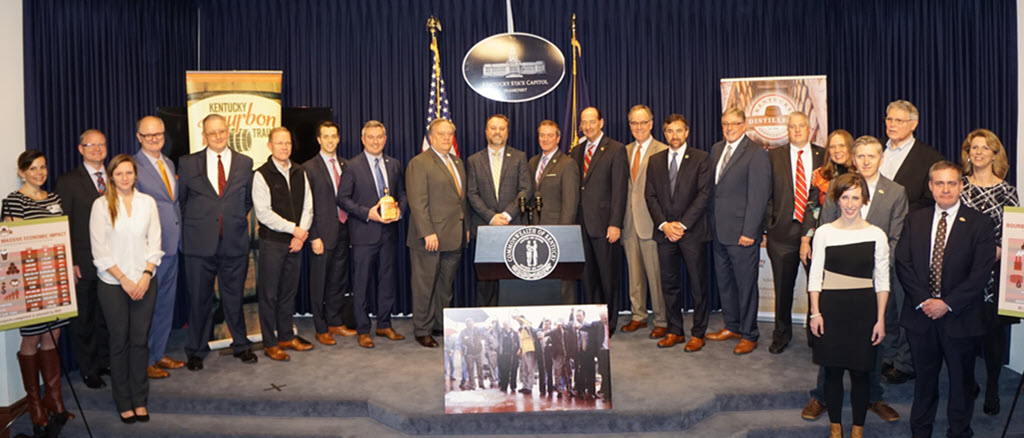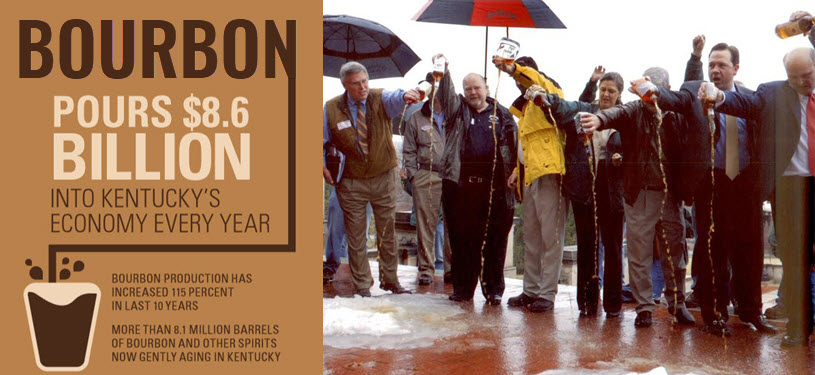
Educator and author Peter Drucker taught the world a lot about how to manage a business. One of his famous quotes reads, “If you can’t measure it, you can’t improve it.” That is a key part of a journey that the Kentucky Distillers’ Association and its members have been on for the last 10 years – they measure everything. Another part of that journey is how to make a splash and share that story. And let’s face it, when it comes to bourbon everybody loves a splash and a great story.
The Infamous “Bourbon Tea Party” – The Shot Heard Round the World
The journey started back in 2009 when a group of Kentucky distillers held the “Bourbon Tea Party” where they boldly poured America’s Native Spirit – Bourbon on the steps of the state’s Capital to protest unfair tax increases. That was the shot that was heard the world round and started the state’s $8.6 billion bourbon boom.
Bill Samuels, Jr. Chairman Emeritus of Maker’s Mark Distillery is one of the Bourbon barons who poured whiskey on the Capitol steps a decade ago. He credits the Commonwealth for partnering with the Bourbon industry during this time of tremendous growth. Samuels saved that bottle of Maker’s he poured on the steps that day and brought it to this latest gathering.
Back in 2009 the Kentucky Distillers’ Association in partnership with the University of Louisville compiled the industry’s first ‘Economic and Fiscal Impacts of the Distilling Industry in Kentucky’ study. It is one thing to toss out interesting facts and figures but it’s another thing to gather the facts and figures and show the impact of what the industry has done for the entire state. This study, which is now done biennially is in its 10th year. Links to the original and most recent study are included below.
The 4 Key Components of the Economic Impact Study
This excerpt from the original report summarized it best and established the road map for the following decade. The report is organized as follows.
- First, we provide and discuss estimates of the size of the industry in Kentucky, in terms of production, jobs, and payroll.
- Second, we investigate the linkages between distilling and other businesses in Kentucky. This analysis provides a basis of an economic impact statement, including multiplier effects.
- Third, we provide estimates of tax payments to state and local governments.
- Finally, we examine the tourism potential of the Kentucky Bourbon Trail.
The order may vary over the years but the data is all still in there and more.
Bourbon Pours $8.6 Billion into Kentucky’s Economy
Going right back to the steps where it happened, the 2019 economic impact report was unveiled by bourbon barons along with elected officials and key business executives at the state’s Capitol. The latest report shows the homegrown industry now provides twice as many jobs, payroll, capital investment and tax revenue than a decade ago. You can watch the entire presentation in the video below or listen to the podcast on the go.
Podcast: Play in new window | Download
Subscribe: RSS
Stay Informed: Sign up here for the Distillery Trail free email newsletter and be the first to get all the latest news, trends, job listings and events in your inbox.
Eric Gregory, President of the Kentucky Distillers’ Association, applauded state and legislative leaders for their work to modernize archaic alcohol laws, reform outdated tourism restrictions and tackle the discriminatory tax that only Kentucky levies on aging whiskey barrels.
“What a monumental success story,” Gregory said. “By working together to remove unnecessary and artificial barriers to business, we have transformed Kentucky Bourbon from an industry once viewed as ‘sin’ to one that truly defines signature impact, expansion and global image. This is the epitome of how a public-private partnership works.”
Kentucky Gov. Matt Bevin said, “Distilleries – from craft startups to multi-national players – create jobs and investment throughout the state. The industry also draws related businesses, such as cooperages, marketing, retailers and restaurants while spurring tourism and economic vibrancy statewide. The Commonwealth has a long, proud history of distilling, and the economic impact made by our Bourbon and spirits producers is recognized at national and international levels.”
“As a signature industry, Kentucky embraces with open arms any business looking to build on the growing momentum of the Bourbon industry.”
Key Legislation that Sparked the Boom
Granted the world’s thirst for bourbon had a lot to do with the boom but there was also some key legislation that impacted the state.
- 2014 – House Bill 445 put in place the Ad Valoram Tax Credit which offers distilleries a corporate income tax credit against the amount of barrel taxes paid, and requires distilleries to reinvest that money into their Kentucky operations. (The start of the building boom.) Senate Bill 83 also created a new craft distiller’s license for those businesses producing fewer than 50,000 gallons per year.
- 2016 – Senate Bill 11 allowed for expanded sampling size and drinks by the glass sales at distilleries. Let’s face it, not everyone drinks their bourbon neat.
- 2017 – House Bill 100 allowed for the sale of vintage spirits. All those sought after dusty bottles in Uncle Bill’s basement could now be sold and enjoyed legally.
- 2018 – House Bill 400 allowed fans to ship bottles from the distillery to their home. This only applies to nine states and D.C. with reciprocal laws but it’s a start.
Highlights of the 2019 Economic and Fiscal Impacts of the Distilling Industry in Kentucky Study
The biennial study was conducted by economists Dr. Paul Coomes and Barry Kornstein, formerly of the University of Louisville, in conjunction with the Kentucky Distillers’ Association.
Dr. Coomes noted that their analysis is based on data collected before retaliatory tariffs on whiskey exports were imposed by the European Union, China, Canada, Mexico and Turkey. Therefore, the impact on Kentucky distilling is not yet detectable in this report.
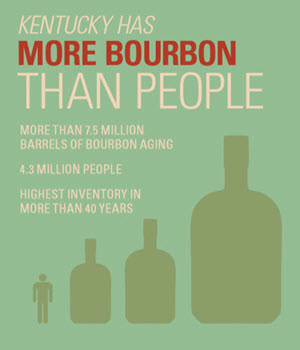 Jobs & Investment
Jobs & Investment

- Distilling contributes $8.6 billion to Kentucky’s economy, a 60 percent increase since 2009
- More than 20,120 people owe their paychecks to the spirits industry, a 104 percent increase in the last 10 years and 2,600 more since 2016
- Payroll for those workers increased to more than $1 billion, from $442 million in 2009
- Distilleries are in the middle of a $2.3 billion building boom, nearly twice the projection from the previous study in 2017
- The next amber wave of investments will create 1,800 new jobs, $70 million in payroll and $8.4 million in tax revenue
- Average salary for distillery employees is $94,899, up from $77,000 a decade ago
- Distilling has the second highest job multiplier in the state when it comes to total number of jobs and spin-off factor, behind only light truck and utility vehicle manufacturing
- If the industry continues to grow at this rate, economic output will exceed $10 billion by 2020, with employment more than 24,000, with payroll over $1.2 billion
Taxes & Revenue
- At 28 percent of every dollars of output, Kentucky taxes spirits production higher than all other 532 industries in the state
- Kentucky’s excise and wholesale spirits tax rate is fifth highest in the country among open market states and twice the rate as Tennessee
- More than $235 million in tax revenue for local and state governments is generated by spirits production and consumption, an 88 percent increase since 2009
- Distillers paid a record $23 million in barrel taxes in 2018 to fund local schools, libraries and other community needs. That’s more than double ($10 million) from a decade ago
- The tax-assessed value of aging barrels is now $3 billion, triple the value in the last 10 years
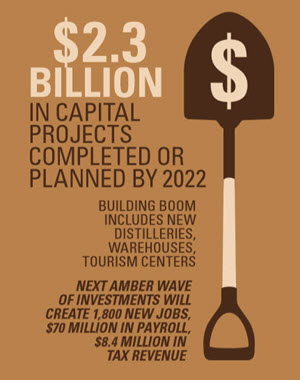 Production & Exports
Production & Exports

- The number of distilleries has grown to 68, a 258 percent increase in the last 10 years
- 32 Kentucky counties have at least one distillery, up from only 8 in 2009
- Bourbon barrel inventory, now at 7.5 million, has reached its highest level since 1972. Bourbon production (new barrels filled) has increased 115 percent since 2009
- Kentucky exported more than $450 million in Bourbon and other spirits in 2017; the export value has tripled in the last 20 years
- KDA distillers bought more than nine million bushels of corn and other grains from Kentucky farmers in 2017, more than half of all distillery corn purchases
Gregory thanked elected leaders who have embraced Bourbon’s concerted effort to be good corporate partners, and praised the industry’s continued support of social responsibility issues like the revamped ignition interlock bill being debated in the current legislative session.
“We are grateful that lawmakers recognize the vital role that our industry plays in jobs, revenue and tourism, and we look forward to working with them to continue our record momentum and to strengthen Kentucky’s rightful place as the one, true and authentic home of Bourbon.”
See all Kentucky Distilleries.
Resources
The 2010 Economic and Fiscal Impacts of the Distilling Industry in Kentucky Study
The 2019 Economic and Fiscal Impacts of the Distilling Industry in Kentucky Study
Please help to support Distillery Trail. Sign up for our Newsletter, like us on Facebook and follow us on Twitter.

